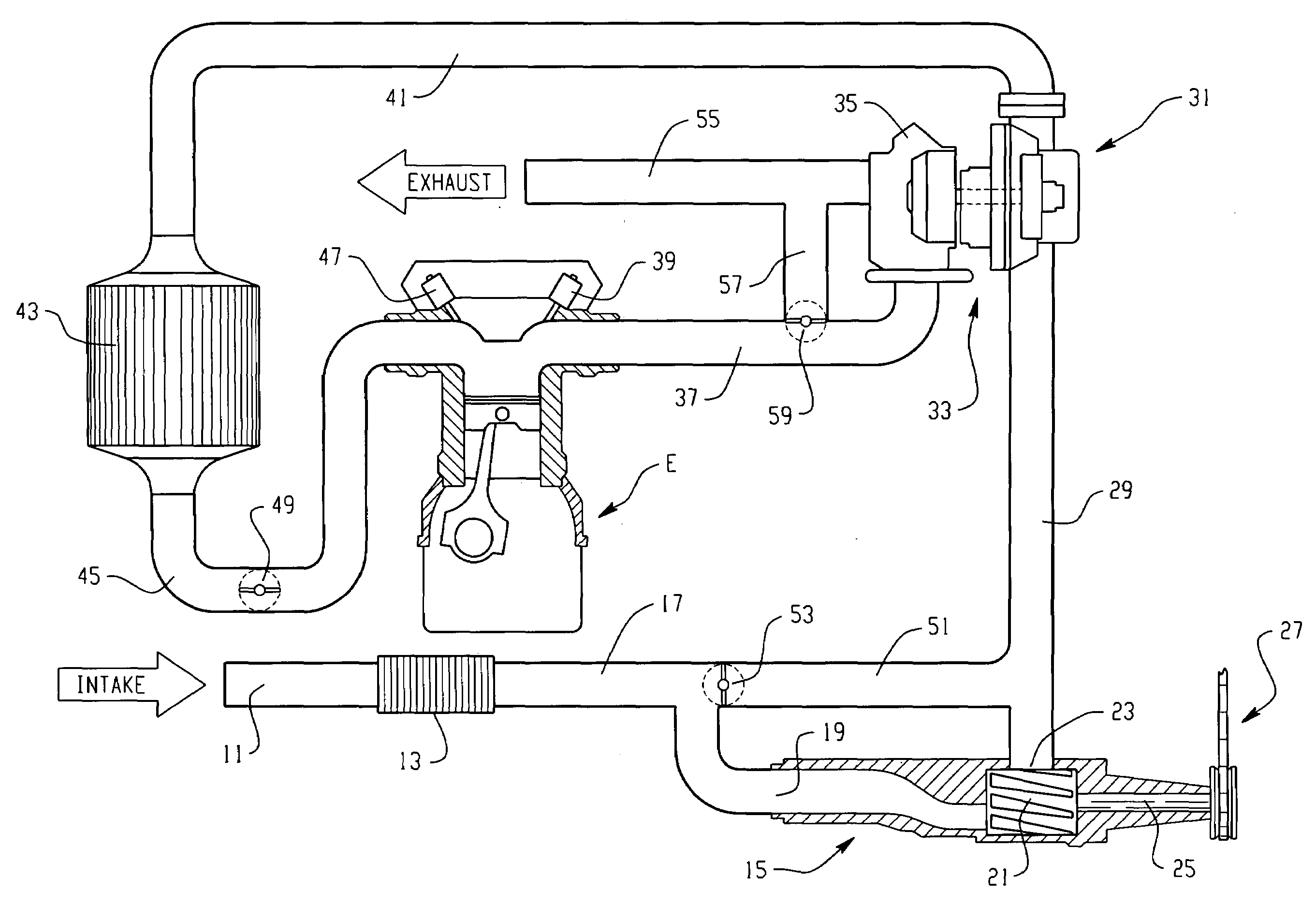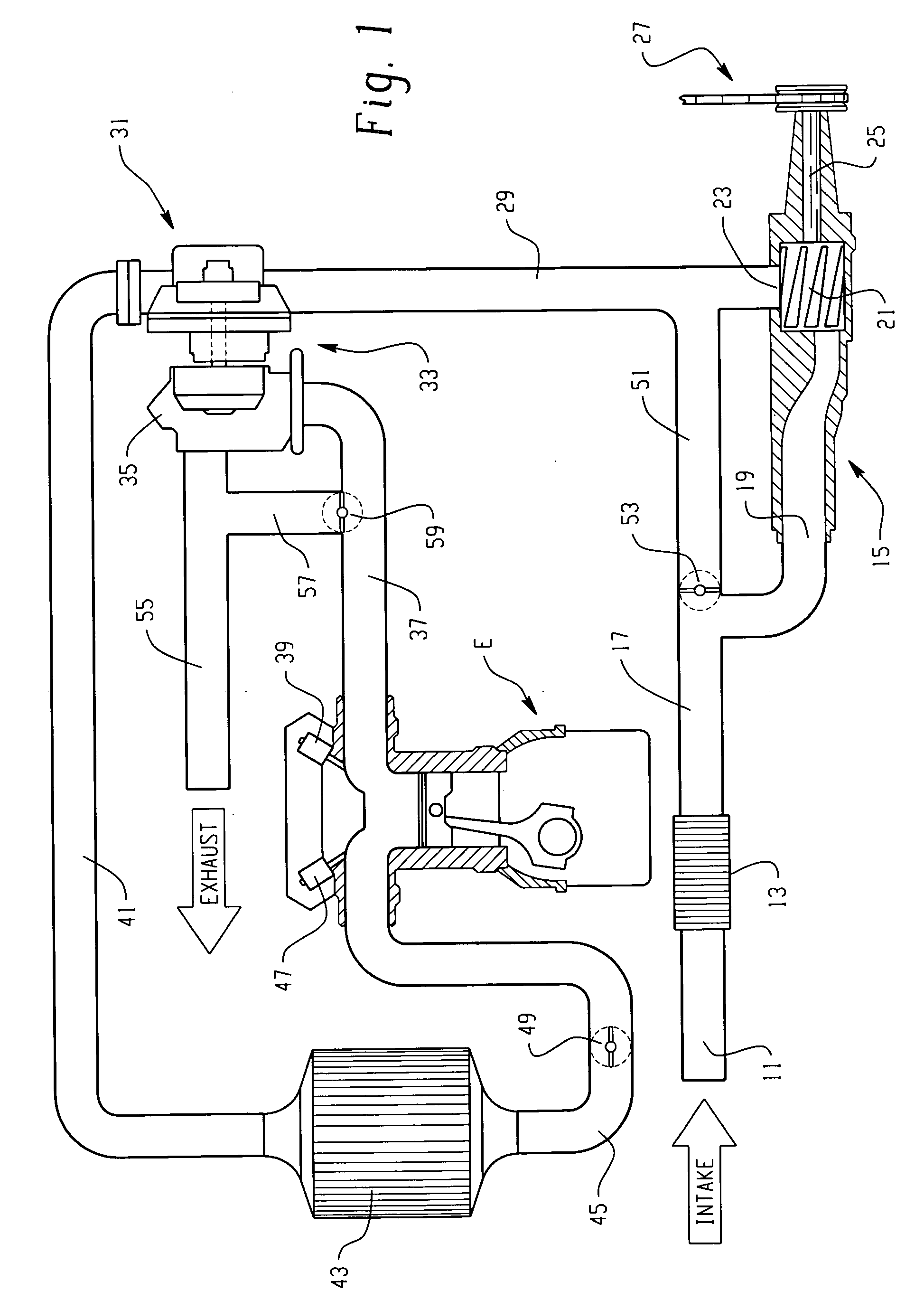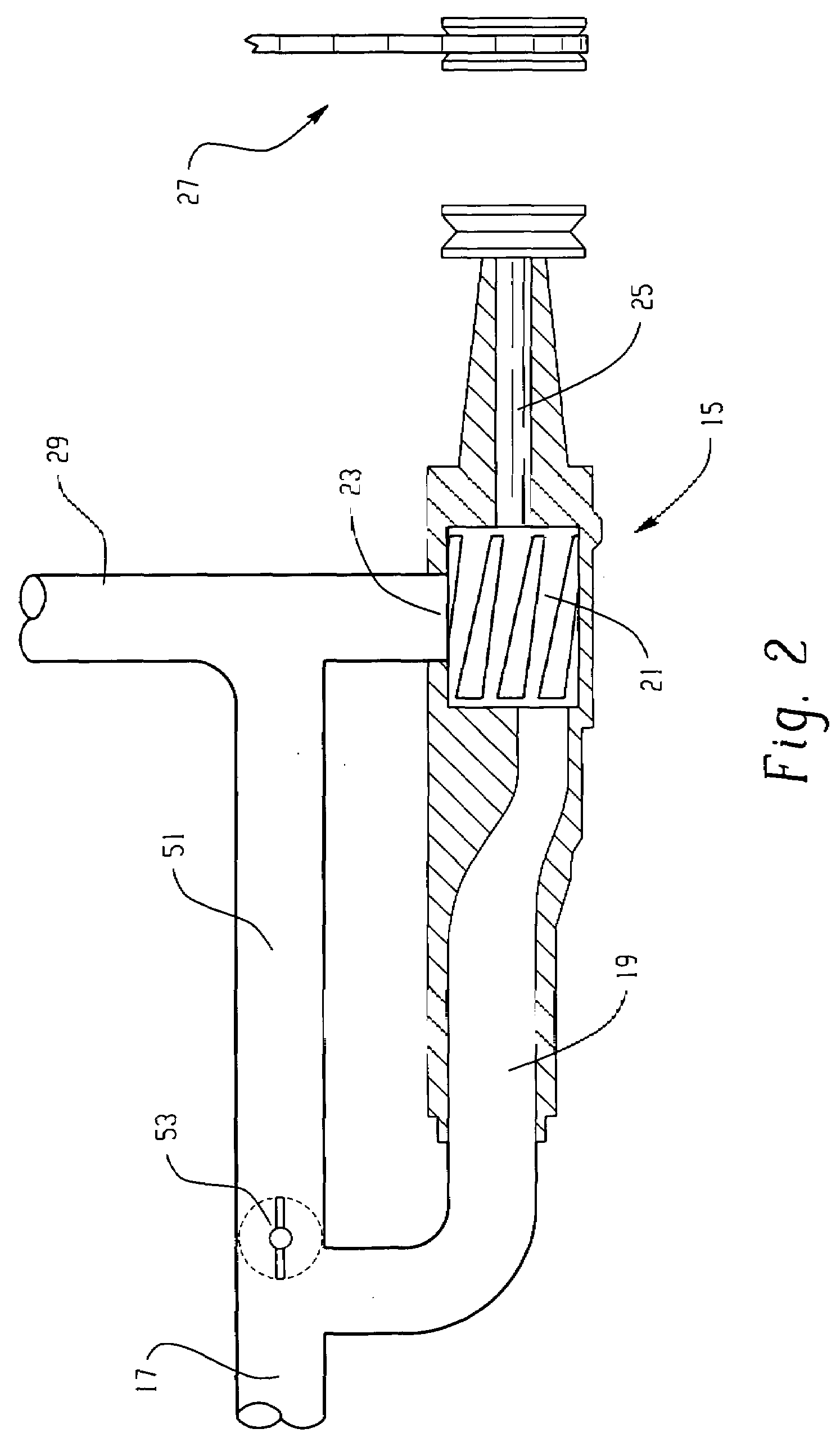Clutched super turbo control strategy
a super turbo and control strategy technology, applied in the direction of engine controllers, machines/engines, engine components, etc., can solve the problems of reducing the durability of the clutch, objectionable supercharger engagement, and undesirable nvh condition
- Summary
- Abstract
- Description
- Claims
- Application Information
AI Technical Summary
Benefits of technology
Problems solved by technology
Method used
Image
Examples
Embodiment Construction
[0017]Referring now to the drawings, which are not intended to limit the invention, FIG. 1 illustrates a vehicle internal combustion engine, including a “superturbo” boosting system, as that term has been generally defined, and as will be described in greater detail subsequently. Included is a conventional vehicle engine, generally designated E, and represented herein, for simplicity, by a single cylinder-piston combination. Charge air, to be fed into the combustion chamber of the engine E, enters through an intake 11 (see arrow), then flows through an air filter 13, and then flows to a supercharger, generally designated 15, through an air duct 17 which communicates the incoming air into an inlet 19 of the supercharger.
[0018]The supercharger 15 also has, typically, a set of rotors 21 which transport volumes of the incoming air from the inlet 19 of the supercharger 15 to an outlet 23, whenever the supercharger is receiving mechanical drive to its input, represented somewhat schematic...
PUM
 Login to View More
Login to View More Abstract
Description
Claims
Application Information
 Login to View More
Login to View More - R&D
- Intellectual Property
- Life Sciences
- Materials
- Tech Scout
- Unparalleled Data Quality
- Higher Quality Content
- 60% Fewer Hallucinations
Browse by: Latest US Patents, China's latest patents, Technical Efficacy Thesaurus, Application Domain, Technology Topic, Popular Technical Reports.
© 2025 PatSnap. All rights reserved.Legal|Privacy policy|Modern Slavery Act Transparency Statement|Sitemap|About US| Contact US: help@patsnap.com



